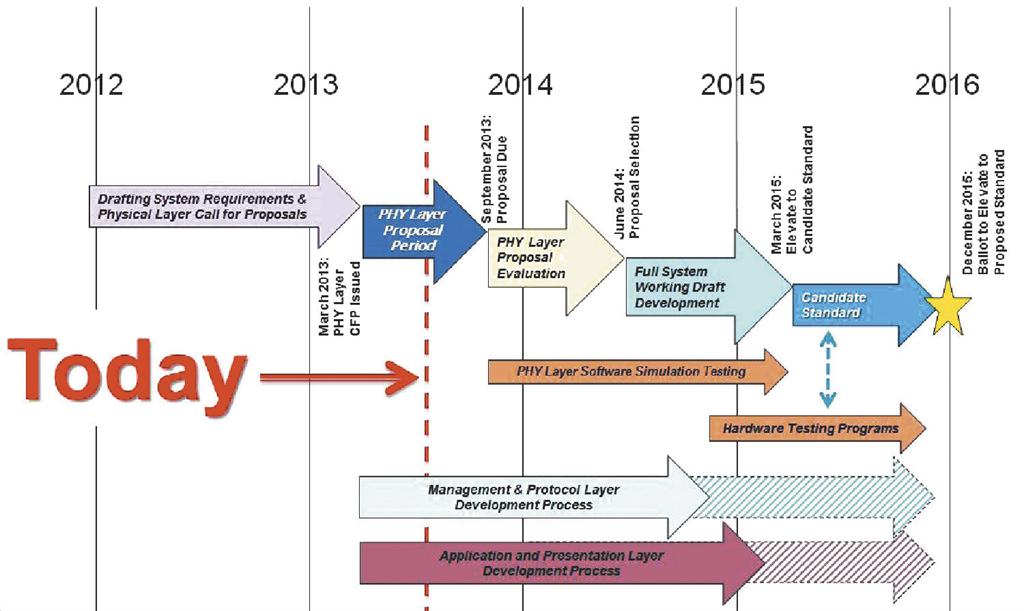Keeping Over-the-Air Broadcasting Relevant

ATSC plans to issue a candidate standard for ATSC 3.0 by the end of 2016.
JOHNSTON, IOWA—How are broadcasters going to ensure the future of over-the-air terrestrial broadcasting? I am actively participating in a number of organizations that are contributing to enhancing current digital television services and developing the next generation of services.
Organizations like Advanced Television Systems Committee and the Future of Broadcast TV (FoBTV), an unincorporated, non-for-profit, voluntary association founded by 13 television broadcast organizations from around the world, are looking at the future on a global scale while other organizations like NAB and EBU have a more regional focus, but are still very actively participating in the global view.
In an ideal world, we would all get together and hammer out worldwide standard that would allow manufacturers to build products that worked everywhere and consumers could watch content on any device anywhere. I don’t think there is a technological reason that would prevent that, but technology isn’t the only component of the mix. There are social, political and cultural components that will also come into play and will influence and may even dictate what can and cannot be done.
MOBILE DTV
One of the main projects going on at the ATSC right now is the mobile DTV enhancement to the existing ATSC service. I personally have looked at mobile DTV as an “experimental” service to prove the concept that if we offer broadcast services that can be received on mobile devices, people will use them. The experiments that I have seen certainly demonstrate that the technology, while not flawless, does work, but adoption has been slow.
What is needed is a catalyst and I am most interested in the Mobile-EAS project that is being directed by Jay Adrick. Repeatedly, we have seen where, during a crisis when traditional mobile services such as cellular have collapsed, broadcast continues to provide emergency and often lifesaving information. An M-EAS plan that would allow broadcasters to deliver the same feature- rich emergency information that we send to our traditional viewers could be that catalyst. I can envision a smart device that not only has the graphical map of the area of interest, and the text and audio alerting the user, but also takes advantage of the geolocation capabilities of the device itself to let the user know where they are in relationship to the event. This is the kind of service that terrestrial broadcasting could provide during situations that would crush the traditional cellular service.
ATSC 3.0
Another area of interest is the next generation broadcast standard, ATSC 3.0. In late 2011, the ATSC formed a Technology Group to explore what was next for terrestrial broadcasting. Probably one of the hardest decisions to make in creating the charter for the group was that the new standard would not be constrained to be backward compatible with the previous ATSC DTV standards.
System requirements were drafted in 2012 and the process was quite interesting as we worked closely with the FoBTV organization in soliciting potential use cases from interested parties worldwide. The ideal would be a global standard, but if that is not possible, at least to have global standards for as many of the components that make up the systems as possible. More than 70 use cases were gathered and they were distilled down to 13 usage scenarios encompassing everything from flexible and efficient use of spectrum to interactivity and accessibility. The end result is a list of some 140-plus requirements.
The professional video industry's #1 source for news, trends and product and tech information. Sign up below.
Coincident with the latter part of this work was the creation of specialized groups to tackle the fundamental designs of the specific layers proposed to make up the new standard. The current Technology Group (TG3) structure breaks out into the Physical Layer, the Management/Protocol layer and the Application/Presentation layer. Each group is tasked with building the functional blocks and developing the components that will make up the new standard. It is quite an undertaking, given that the timeline that we have established requires the delivery of a candidate standard by December 2016. I will make one appeal to my readers: if you are interested in working on the future of terrestrial television broadcasting, contact ATSC and find out how you can get involved.
Although I am concerned about the future of terrestrial broadcasting, I know that we can create a more robust, vibrant and valuable service through technology. I sit in meetings with people that I consider to be geniuses at solving technological challenges. My concern is that the audiences that have benefitted from our past work, currently benefit from what we do today, and will gain additional benefits from what we do in the future, are unaware of the nature of what we are. Our biggest challenge will be to educate consumers that television everywhere will require a robust and well thought-out ubiquitous wireless service. We have been that for more than half a century.
Bill Hayes is the director of engineering for Iowa Public Television. He can be reached via TV Technology
Bill Hayes is the former director of engineering and technology for Iowa PBS and has been at the forefront of broadcast TV technology for more than 40 years. He’s a former president of IEEE’s Broadcast Technology Society, is a Partnership Board Member of the International Broadcasting Convention (IBC) and has contributed extensively to SMPTE and ATSC. He is a recipient of Future's 2021 Tech Leadership Award and SMPTE Fellow.

